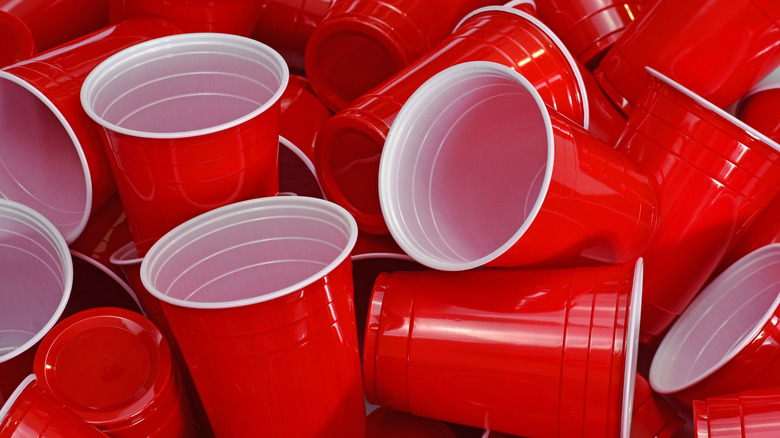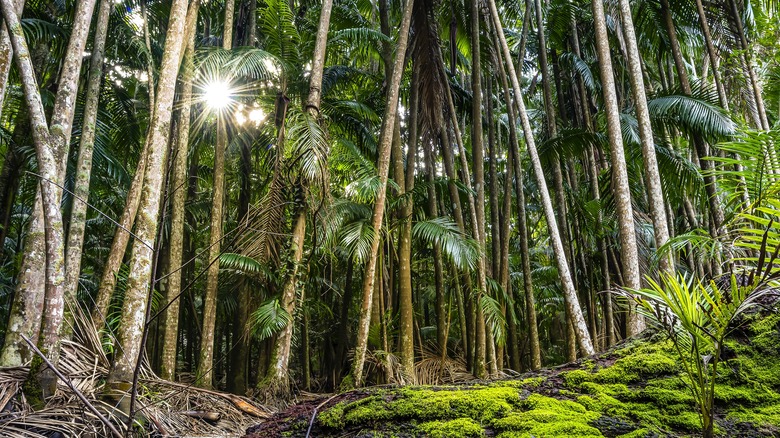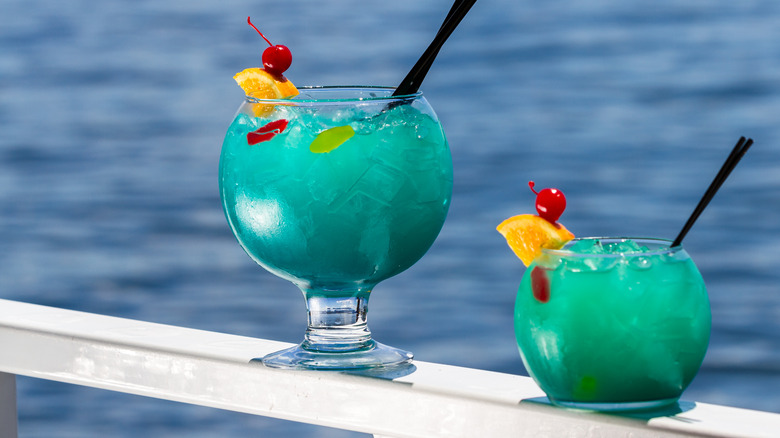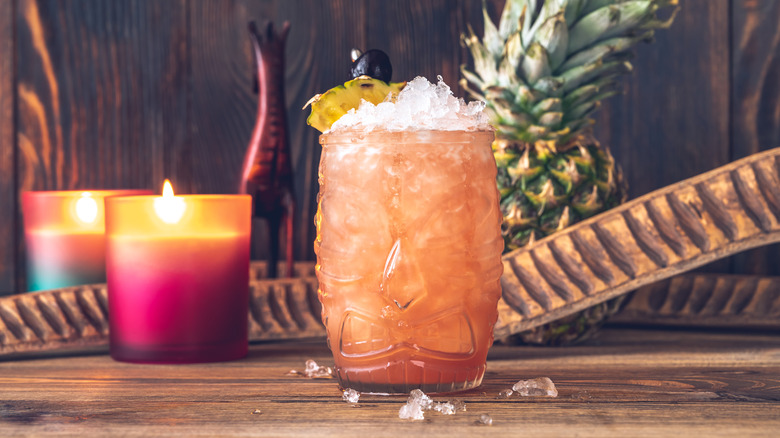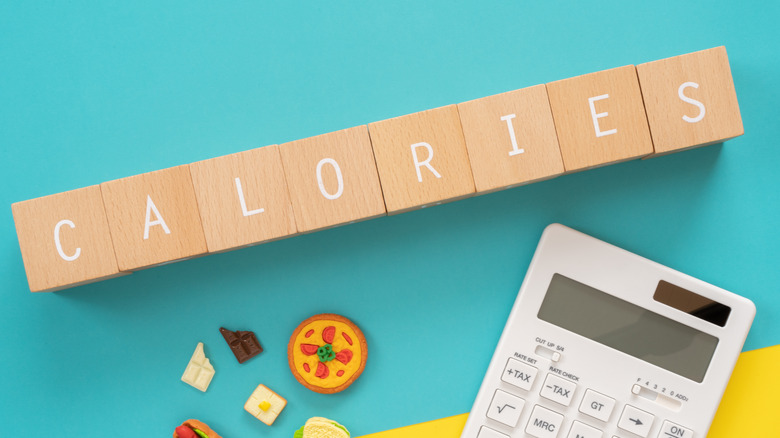What Is Jungle Juice And What Does It Taste Like?
If you were never one for big college parties or maybe just have an aversion to consuming anything that comes out of a trash can, it's possible you might not be familiar with "jungle juice". According to Love To Know, this beverage in its early form actually dates back to the 1600s. Back in the day before ships were equipped with generator-run refrigerators, sailors had to invent ways to keep their fruits and spices from going bad. The answer was to add alcohol.
Since then, the idea of punch hasn't changed drastically. So, jungle juice is basically the same idea as an alcoholic punch, but on a macro level. It can often be found in a cooler or trash cans full of whatever mixed juices and alcohol intrepid amateur mixologists can get their hands on. But if it's just a simple punch, then where did we get the name jungle juice?
How jungle juice got its name
While the mixing of alcohol and practically anything that will make it taste better dates back to antiquity, this jungle juice got its name from American soldiers in World War II, according to Punch. The story goes that soldiers in the jungles of the Southern Pacific theater were having a hellish time getting wasted. The US military wasn't exactly going to supply their men with the most lavish liqueurs and Champagne, after all. So, the soldiers took it into their own hands by fermenting absolutely anything they could with sugar — swamp water reportedly included.
In modern times, some of us have graduated from making alcohol in empty gasoline drums to empty coolers and garbage cans, clearly maintaining that DIY spirit. Instead of fermenting whatever it is the military would ferment, today, whatever can be poured will be poured. That could mean literally anything, so watch out the next time you're scooping your red plastic cup into a trash can of unidentifiable liquid. It might even be fermented swamp water.
The rise of the modern maximum cocktail
The version of jungle juice American GIs were concocting certainly helped to beget the contemporary version we know now (if your memory is still intact, anyway). Yet, according to VinePair, the original jungle juice helped pave the way for all the giant party cocktails and punches that followed. Be it jungle juice, trashcan cocktails, or fishbowl drinks, these economic party mixes all fall under the umbrella of the "maximum cocktail".
Slowly, but surely these cocktails transformed from jungle water to bottles of Everclear and fruit punch mixed together, sometimes in a frat house bathtub. By the late '80s, the same college students who were using their legs to mix troughs of party cocktails were in the bar business. Some began to mix various alcohols in literal fish bowls for a slightly more upscale look, at least compared to their past tubs and garbage cans
You can make a less reckless party version
While the original versions of jungle juice tended to be on the harsh side, there are quite a few more refined versions. Even with a fair amount of alcohol, mixing juice and booze into a cleaner container like a drinks dispenser (with a tap and everything!) won't keep your guests wondering what kind of disease they might have contracted in the morning. And the best part is, depending on the ingredients involved, you can almost trick yourself into thinking it's healthy.
With some fresh strawberries and oranges, and numerous bottles of juices and booze, you don't even need to be a mixologist to throw this party favorite together. For a smaller batch, consider grabbing some nicer juices, a touch of seltzer or club soda, and some rum and vodka for that adult beverage edge. Compared to its precursors, this mix should go down quite a lot easier — especially if no one's scooping it out of an unsanitary container.
Jungle juice calories are high
Even the more contemporary versions of jungle juice can be problematic. Though you may not be risking dysentery or a frat boy's leg having stirred your drink, the calories and sugar in today's versions of jungle juice are enough to make it worth dancing on tables, just to burn some of that off. According to Livestrong, a standard shot of 80 proof rum or vodka has 97 calories, while 94 proof contains 116 calories. But those are just standard shots. Everclear vodka, for example, has a whopping 183 calories in just one shot. And it's important to keep in mind that, with jungle juice, you're not just taking a shot. Neither will it be just alcohol, but a type of punch with plenty of sugary juice.
As with many juices, the calories can change from brand to brand, but according to Calories.info, just eight ounces of lemonade contains an average of 120 calories, while cranberry and orange juices typically have 110. Multiply that by the number of bottles used, plus the rum and vodka, and you might want to think twice about how many times you dip that ladle.
